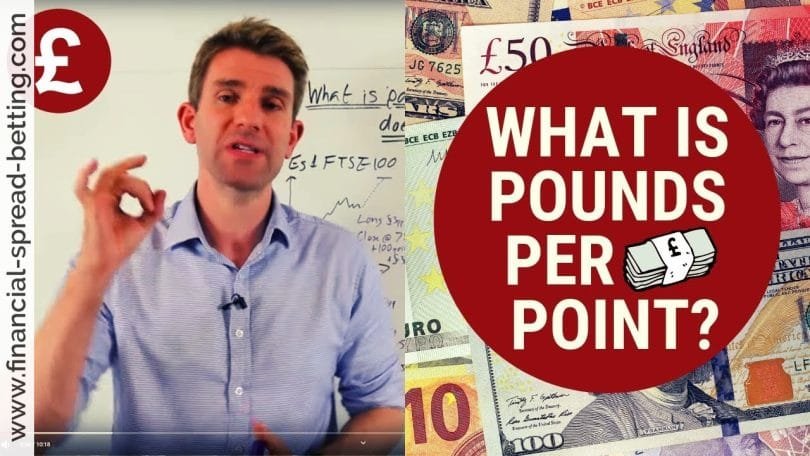Q: How can I work out my exposure on a position?
A: Your exposure is per point – so you are risking the value of your stake on each point in the price. Suppose the bid-offer spread of ABC Ltd is 1885 – 1900 x £ 10 stake = £19,000 exposure. That would mean that a £10 stake on ABC Ltd is the same as owning £19,000 worth of shares in ABC Ltd. So, if ABC Ltd were to close with no value left in the shares, you would have lost £19,000 and if ABC Ltd doubled in price you would have gained £19,000. I’ve discussed the equivalent exposure of positions in stocks in more detail here
With spread betting a £10 bet has the same market exposure as buying (or selling) 1,000 shares (for UK shares). If you want to buy 1,000 UK shares you make a £10 bet, if you want to sell, you sell a £10 bet. If the minimum margin on Vodafone is 10%, so with Vodafone trading at 140p to make a £10 bet you’re going to have to have at least £140 in your account.
When it comes to weighing up the risk, you don’t want to be betting the same amount on every instrument – £10 a point on Vodafone at 140 means you’ve got £1,400 of exposure but if you do £10 a point bet on the Dow at say 42,000, you’ve got more than £420,000 exposure.
Q: But isn’t it more complicated than shares dealing?
A: No, spread betting is dead simple – making money trading from it is not as you have to correctly predict the market direction.
If you buy 500 LLOY shares you will make £5 every time LLOY moves up a penny [0.01 x 500 shares]. Similarly, when you spreadbet LLOY at £5 a point you will make £5 every time LLOY moves up a penny.
If you buy 500 LLOY at 54p it will cost you £270 + costs. If you spreadbet LLOY £5 per point (pp) you will give the spreadbet company £27 (10% deposit). If LLOY goes bust you will still owe them the balance of £270 and if the trade goes against you, you will lose £5pp. There are no costs with the spreadbet but the spread is a little wider than the market.
You can short shares far more easily – the notion is the same. If you short LLOY £5pp you will make £5 every time LLOY goes down. You will again give the spreadbet company £27, the only difference is that your liability is actually infinite because LLOY can just go up and up and up and up. Stops are therefore even more important on shorts than longs!
I have no idea why people think spreadbetting is so complicated. Want to buy 1000 shares, that’s £10pp, 2000 shares is £20pp…not complicated at all really. Deposits and margins vary amongst providers; see spreadbetting terms and conditions for details.
Q. Can I close my position at anytime?
A: Yes. Closing will sometimes be labelled as such – particularly when closing the entire bet by hitting a ‘close’ button, but most often shows up as simply a bet placed in the opposite direction (at whatever is latest quote) and can either close (cash in) the whole of the original bet, or part of it, or can indeed be at a bigger stake than the original bet – thereby reversing its direction.
Eg: Say you have a £12 per point up bet on Tesco (TSCO).
You can simply close it – anytime – by hitting the ‘close’ button if there is one – or by placing a ‘sell’ bet at the same stake of £12pp (per point).
Or you could place a ‘sell’ bet at say £4pp, cashing in that portion of the bet at the current quote and leaving you with an ongoing £8pp up bet at the original price. Or if you think the share price is about to swing the other way, you could instead place a ‘sell’ bet at say £20pp, which would cash in your original £12pp up bet and also open (at current quoted price) a £8pp down bet.
I quite frequently close my bets in stages. If I feel the share price has probably moved as far my way as it’s likely to – but hasn’t yet reversed – I might close say four fifths of the stake, and let the remaining reduced stake run on a little longer – just in case my exit was earlier than strictly necessary. Then close that final portion when the price is more clearly turning bad.
You can do this button pushing as frequently as you want. At times when watching for a stock to start moving, I have opened at £2pp – just to be onboard early – and added in several stages up to whatever maximum stake.

